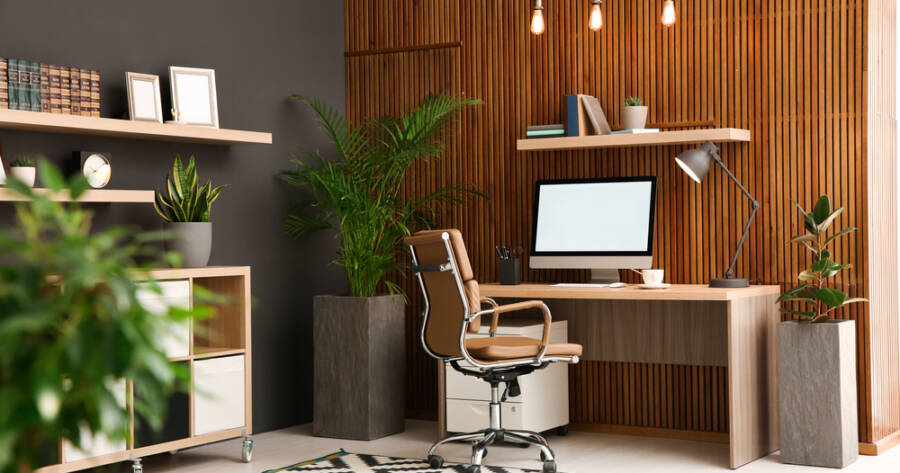Working from home has its perks but creating a space that keeps you focused, inspired, and comfortable can make all the difference. A well-designed home office doesn’t have to be fancy or expensive. With a few thoughtful changes, you can transform any corner into a place you genuinely enjoy spending time in. The key is making it personal, functional, and energizing, so work feels less like a chore and more like a space that supports your best thinking.
Start With the Right Location
Choosing the right spot for your home office is the foundation for everything else. Ideally, you want a quiet area with natural light, away from the hustle of household traffic. A spare bedroom is great, but even a corner of your living room or a well-placed desk by a window can work wonders.
Think about what helps you focus. Do you prefer privacy or a spot with a view? Avoid setting up in places associated with relaxation, like your bed or sofa. Defining a designated workspace (no matter how small) signals to your brain that it’s time to shift into work mode, which improves both productivity and boundaries.
Invest in a Comfortable, Supportive Chair
If there’s one item worth splurging on, it’s a quality chair. Sitting for long hours in a stiff or unsupportive seat can lead to back pain, fatigue, and distraction. Look for an ergonomic chair that offers good lumbar support, adjustable height, and comfort for extended use.
If you’re on a budget, there are plenty of mid-range options that offer support without sacrificing style. Add a lumbar pillow or seat cushion to enhance your current setup. Comfort impacts focus more than we often realize, and a chair that keeps your posture in check makes it easier to stay productive throughout the day.
Let Lighting Boost Your Energy and Focus
Good lighting does more than brighten your space–it affects your energy, mood, and eye health. Natural light is ideal, so position your desk near a window if possible. For darker rooms or late-night work sessions, layer your lighting with a mix of ambient, task, and accent lights.
Avoid harsh overhead lights or relying solely on your computer screen. A soft desk lamp with warm or daylight-toned bulbs creates a more inviting and functional workspace. Don’t underestimate how much lighting can shape your experience. Well-lit spaces tend to feel more uplifting and help you stay engaged throughout your workday.
Minimize Clutter, Maximize Focus
Visual clutter can lead to mental clutter. Start by keeping only the essentials on your desk, such as your computer, notebook, a few pens, and maybe a plant or photo that makes you smile. Use drawers, trays, or organizers to keep supplies within reach but out of sight.
Digital clutter matters too. Set aside time once a week to clean up your desktop, close unused browser tabs, and sort through emails. A clear physical and digital space helps reduce stress and makes it easier to find what you need. When your workspace feels calm and organized, your brain can settle into focus mode much more easily.
Make It Personal and Inspiring
Your office doesn’t have to feel sterile to be productive. In fact, adding personal touches can boost creativity and help you feel more connected to your space. Consider artwork, a vision board, favorite books, or meaningful photos—whatever motivates and grounds you during your workday.
Plants are another great addition. They add life, improve air quality, and create a more inviting atmosphere. Choose low-maintenance options like snake plants or pothos if you’re not confident in your plant care skills. A little personality in your workspace makes it feel like a place you want to be, not one you have to tolerate.
Design With Flexibility in Mind
The best home offices are adaptable. Your needs might change depending on your tasks, time of day, or energy levels. If possible, incorporate elements that allow you to move around, like a standing desk converter, a comfy chair for reading, or even a floor cushion for brainstorming sessions.
Think of your office like a mini ecosystem that supports different work styles. Maybe you need bright light and structure in the morning, but prefer a cozier, relaxed vibe by afternoon. Keep a throw blanket nearby, play calming music, or light a candle to transition your environment with your mood. Flexibility keeps your space (and your mindset) fresh.
Design a Space That Works for You
Your home office should do more than function–it should support your focus, well-being, and daily rhythm. When you intentionally shape your space to reflect your needs and personality, work feels more manageable and even enjoyable.
Whether you’re revamping a full room or refreshing a quiet corner, a few small shifts can have a big impact. The more your office works for you, the easier it becomes to show up, stay inspired, and actually love where you work.

